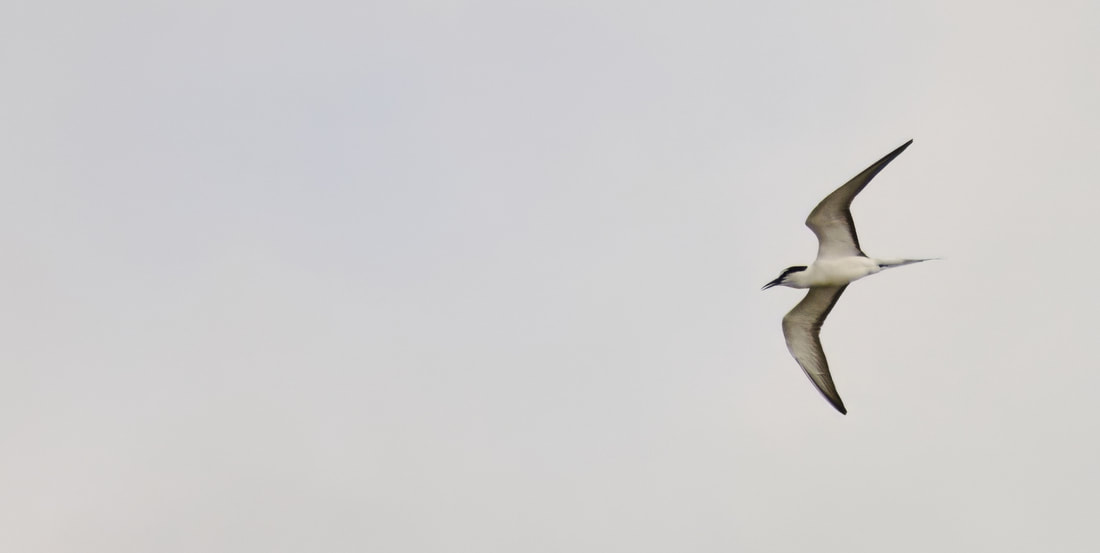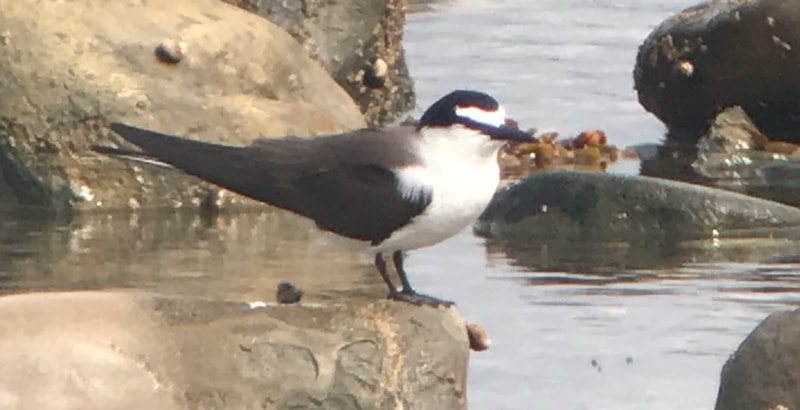 Above: Bridled Tern (Zak Spaull). Photos below by Levi Gravett. Above: Bridled Tern (Zak Spaull). Photos below by Levi Gravett. A seabird that breeds on tropical islands has made the national birding headlines after turning up near Criccieth. The Bridled Tern, which nests no closer than the Caribbean, was found on Sunday close to where the Afon Wen meets Cardigan Bay, and seen again on Monday afternoon.
Bridled Terns breed on rocky islets, but little is known about where they spend the rest of the year. There have been only 25 previous records in Britain, of which two were in Wales: one found dead on the Gower in 1954 and another that spent several weeks among Sandwich Terns at the Cemlyn colony on Anglesey in 1988. This week’s, close to the Hafan-y-Môr holiday park, was also with Sandwich Terns feeding offshore before starting their autumn migration to West Africa. The rare visitor came in the wake of strong winds that had brought two Cory’s Shearwaters past Cemlyn, and three more plus Great, Sooty and Balearic Shearwaters past Bardsey. Birders on Bardsey and Rhos Point also recorded Storm Petrel last week, and Arctic Skuas were seen from several coastal watchpoints. Smaller migrants are also on the move, with Wheatears and Whimbrels appearing on coastlines from which they have been absent since heading north in May. On Bardsey, the first Spotted Flycatcher of autumn and increased numbers of Willow Warblers took their first steps to an African winter. Four Curlew Sandpipers were on the Border Pool at RSPB Burton Mere Wetlands on Friday, and numbers of Curlews, Turnstones, Redshanks and Oystercatchers are building after completing their breeding season in the Arctic, mainland Europe or farther north in Britain. Although many terns have left their Anglesey nesting colonies, where hundreds have died from bird ‘flu this summer, a few remain at Cemlyn, where broods of Shelduck and Ringed Plover fledged successfully.
0 Comments
Leave a Reply. |
Bird notesA weekly update of bird sightings and news from North Wales, published in The Daily Post every Thursday. Archives
July 2024
Categories |


 RSS Feed
RSS Feed
